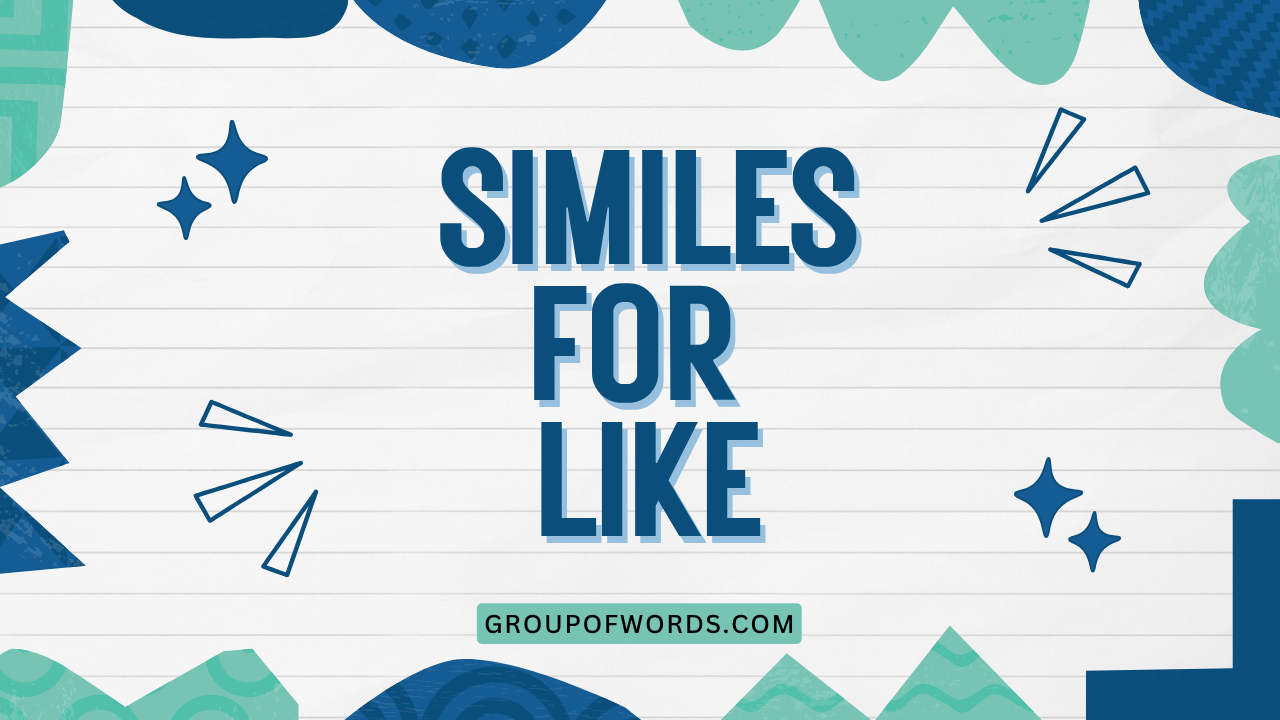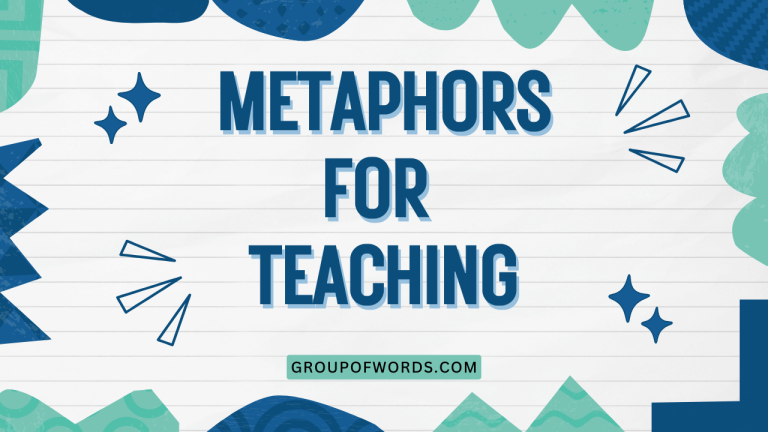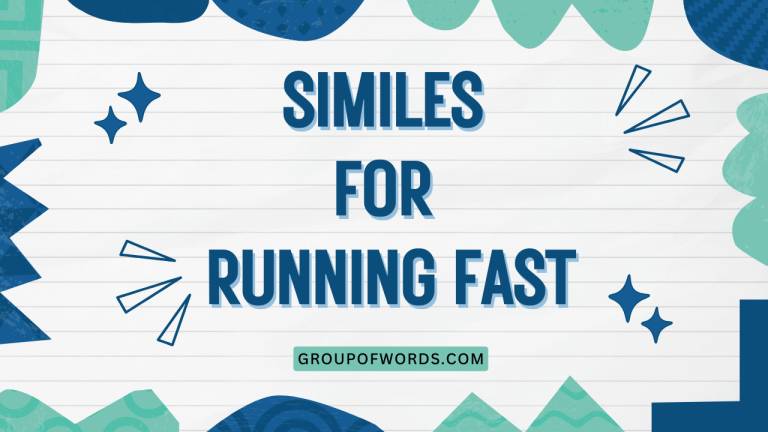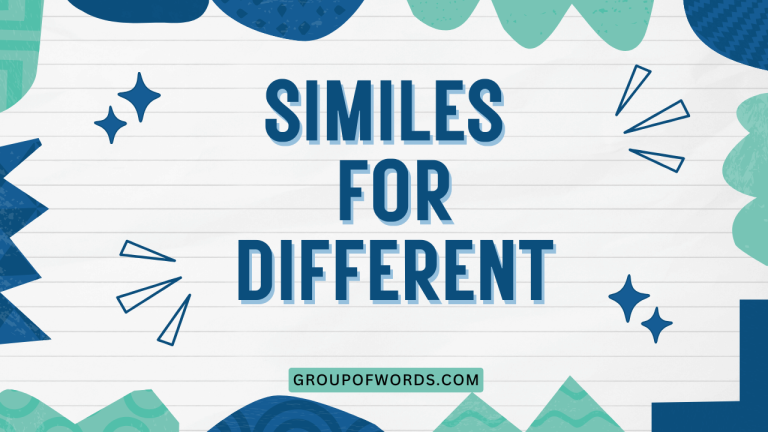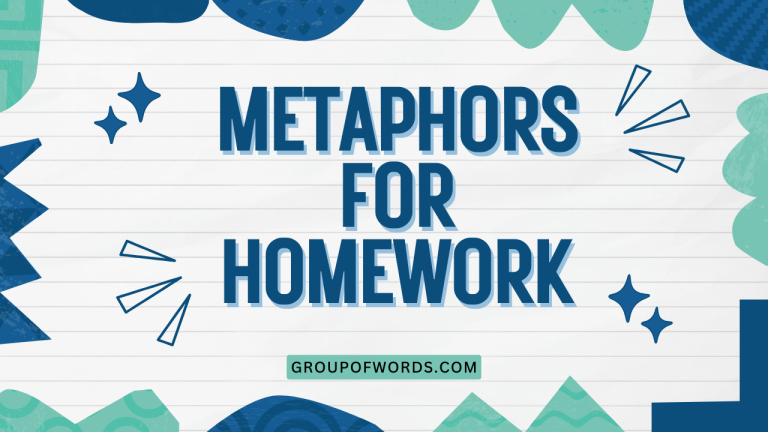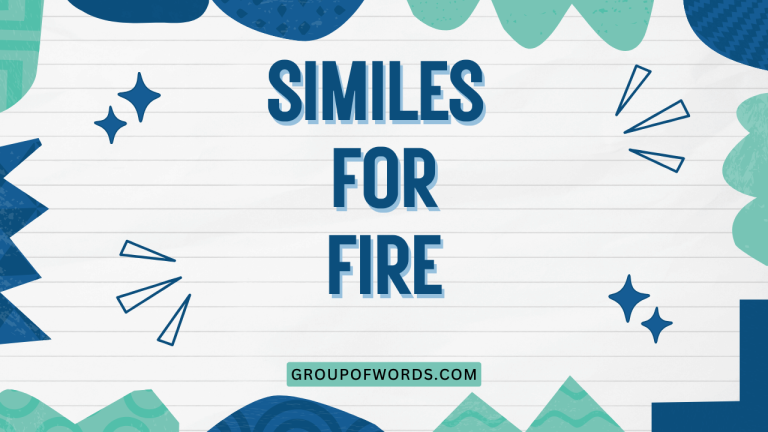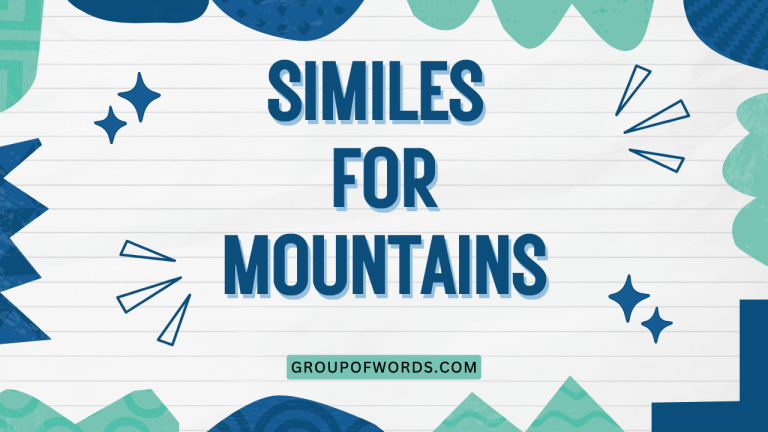Similes for ‘Like’: Enhancing Your English Comparisons
Similes are powerful tools in the English language that allow us to draw vivid comparisons between two unlike things using the words “like” or “as.” Mastering similes not only enhances your writing and speaking skills but also provides a deeper understanding of figurative language. This article will explore various types of similes that effectively replace or expand upon simple comparisons using “like,” providing you with a richer vocabulary and a greater ability to express yourself with precision and flair.
Whether you’re a student, a writer, or simply an English enthusiast, this guide will equip you with the knowledge and practice to master the art of simile creation and usage.
This article is designed to benefit students who are learning to write descriptively, writers seeking to add depth and imagery to their work, and anyone interested in improving their overall English language proficiency.
Table of Contents
- Introduction
- Definition of Similes
- Structural Breakdown of Similes
- Types of Similes
- Examples of Similes
- Usage Rules for Similes
- Common Mistakes with Similes
- Practice Exercises
- Advanced Topics in Similes
- Frequently Asked Questions (FAQ)
- Conclusion
Definition of Similes
A simile is a figure of speech that directly compares two different things, usually using the words “like” or “as.” The purpose of a simile is to create a more vivid and descriptive image in the reader’s or listener’s mind by associating the qualities of one thing with another. Similes are crucial for adding depth, color, and clarity to writing and speech.
Similes are classified as a type of figurative language, specifically a type of comparison. Their function is to enhance understanding and evoke emotions by drawing parallels between dissimilar entities.
Similes are used in various contexts, from everyday conversations to formal literature, and are particularly effective in poetry, prose, and persuasive writing.
Consider these examples to illustrate the definition:
- “She is as brave as a lion.” (compares her bravery to a lion’s courage)
- “The snow was like a blanket on the ground.” (compares the snow’s appearance to a blanket)
Structural Breakdown of Similes
The basic structure of a simile involves three key components: the subject, the linking word (like or as), and the object of comparison. Understanding these components is essential for constructing effective and meaningful similes.
Here’s a breakdown of each element:
- Subject: The thing being described or compared. This is the main focus of the simile.
- Linking Word: The word that establishes the comparison. Typically, this is “like” or “as.”
- Object of Comparison: The thing to which the subject is being compared. This object shares a common characteristic with the subject.
For example, in the simile “He runs like the wind,” “He” is the subject, “like” is the linking word, and “the wind” is the object of comparison. The shared characteristic is speed.
The order of these elements can sometimes be varied for stylistic effect, but the core structure remains the same. For instance, “Like a roaring fire, her anger blazed” still maintains the subject (her anger), the linking word (like), and the object of comparison (a roaring fire).
Types of Similes
Similes can be categorized based on their complexity and the nature of the comparison they make. Understanding these categories can help you craft more nuanced and effective similes.
Simple Similes
Simple similes are straightforward comparisons that use common and easily understood objects or concepts. They are often used to create a clear and immediate image.
Examples of simple similes include:
- “As easy as pie”
- “Like two peas in a pod”
- “As cold as ice”
Complex Similes
Complex similes involve more elaborate comparisons, often using abstract or less common objects. They require more thought and can create a richer, more layered image.
Examples of complex similes include:
- “His argument unfolded like a carefully constructed origami crane, each fold revealing a new layer of intricacy.”
- “The city at night glowed like a scattered handful of diamonds on black velvet.”
Metaphorical Similes
Metaphorical similes are those that border on being metaphors but still retain the “like” or “as” to maintain the comparison. They often compare abstract concepts or emotions.
Examples of metaphorical similes include:
- “Her smile was like a sunrise, chasing away the shadows of my doubt.”
- “Life is like a box of chocolates, you never know what you’re going to get.”
Examples of Similes
To fully grasp the power and versatility of similes, let’s explore various examples categorized by context. These examples will demonstrate how similes can be used to describe appearance, behavior, emotions, objects, and situations.
Similes for Appearance
Appearance similes describe how someone or something looks by comparing them to something else. These are particularly useful in descriptive writing.
The following table provides various similes to describe appearance, helping to create vivid images in the reader’s mind.
| Subject | Simile |
|---|---|
| Her hair | was like spun gold. |
| His eyes | were as blue as the summer sky. |
| The baby’s skin | was as smooth as silk. |
| The old house | looked like a haunted castle. |
| The stars | shone like diamonds in the night. |
| Her dress | flowed like water. |
| His smile | was as bright as the sun. |
| The mountains | stood like giants against the horizon. |
| The clouds | were like fluffy cotton balls. |
| The dew | sparkled like tiny jewels on the grass. |
| His beard | was like a tangled forest. |
| The painting | looked as vibrant as a fresh garden. |
| Her voice | was as clear as a bell. |
| The city lights | twinkled like a million fireflies. |
| The fog | hung like a shroud over the town. |
| His face | was as pale as a ghost. |
| The sunset | looked like a painting from heaven. |
| The waves | crashed like thunder on the shore. |
| Her laughter | was as infectious as a giggle epidemic. |
| The old book | smelled like aged paper and forgotten stories. |
| The building | rose like a monolith from the earth. |
| The dancer | moved as gracefully as a swan. |
| His muscles | were like steel cables. |
| The garden | looked like a riot of colors. |
| The statue | stood as still as time itself. |
Similes for Behavior
Behavior similes describe how someone acts by comparing their actions to something else. These similes help to illustrate character traits and mannerisms.
The table below offers examples of similes used to describe various behaviors, adding depth and insight into characters and their actions.
| Subject | Simile |
|---|---|
| He ate | like a starving wolf. |
| She worked | as diligently as a beaver. |
| They fought | like cats and dogs. |
| He slept | like a log. |
| She sang | like an angel. |
| He danced | like nobody was watching. |
| She argued | like a seasoned lawyer. |
| He ran | like the wind. |
| She studied | as hard as she could. |
| He listened | like his life depended on it. |
| She gossiped | like a town crier. |
| He negotiated | like a seasoned diplomat. |
| She cooked | like a gourmet chef. |
| He drove | like a maniac. |
| She planned | like a military strategist. |
| He sneaked | like a shadow in the night. |
| She reacted | as quickly as a striking snake. |
| He persisted | like water wearing down stone. |
| She adapted | as easily as a chameleon changes color. |
| He worried | like a mother hen. |
| She led | like a beacon in the darkness. |
| He followed | like a loyal puppy. |
| She created | as tirelessly as nature itself. |
| He destroyed | like a hurricane in full force. |
| She forgave | as readily as the sun rises. |
Similes for Emotions
Emotion similes express feelings by comparing them to something tangible or relatable. These similes help to convey the intensity and nature of emotions.
The subsequent table presents similes that describe various emotions, providing a vivid and relatable understanding of internal states.
| Subject | Simile |
|---|---|
| Her joy | was like sunshine on a cloudy day. |
| His anger | boiled like a volcano. |
| Her sadness | was as deep as the ocean. |
| His fear | gripped him like a vise. |
| Her love | was like a warm fire on a cold night. |
| His hope | flickered like a candle in the wind. |
| Her anxiety | was like a swarm of bees in her mind. |
| His relief | washed over him like a cool wave. |
| Her excitement | buzzed like electricity in the air. |
| His despair | was as heavy as a lead weight. |
| Her loneliness | felt like a vast, empty desert. |
| His guilt | weighed on him like a physical burden. |
| Her serenity | was like a still, clear lake. |
| His anticipation | tingled like champagne bubbles. |
| Her frustration | mounted like a rising tide. |
| His disappointment | stung like a slap in the face. |
| Her gratitude | bloomed like a field of wildflowers. |
| His jealousy | gnawed at him like a hungry rat. |
| Her confusion | felt like being lost in a maze. |
| His pride | swelled like a balloon about to burst. |
| Her peace | settled like a gentle snowfall. |
| His desire | burned like a wildfire. |
| Her regret | lingered like a haunting melody. |
| His passion | raged like a storm at sea. |
Similes for Objects
Object similes describe inanimate things by comparing them to something else, often to give them human-like qualities or to emphasize their characteristics.
The subsequent table provides examples of similes that describe objects, enhancing their imagery and making them more relatable.
| Subject | Simile |
|---|---|
| The computer | hummed like a busy bee. |
| The car | roared like a lion. |
| The book | smelled like old paper and forgotten dreams. |
| The clock | ticked like a heartbeat. |
| The wind | howled like a wolf. |
| The rain | fell like tears from the sky. |
| The sun | beat down like a hammer. |
| The moon | shone like a silver coin. |
| The stars | twinkled like diamonds. |
| The river | flowed like a ribbon. |
| The fire | crackled like a mischievous imp. |
| The ice | felt like a frozen blade. |
| The stone | sat like a silent sentinel. |
| The tree | stood like a wise old man. |
| The mountain | loomed like a sleeping giant. |
| The road | stretched like a black snake. |
| The bridge | arched like a graceful dancer. |
| The building | rose like a monument to ambition. |
| The machine | worked like a well-oiled clock. |
| The instrument | sang like a nightingale. |
| The mirror | reflected like a still pond. |
| The painting | glowed like a hidden treasure. |
| The statue | stood like a frozen memory. |
| The flag | waved like a defiant spirit. |
Similes for Situations
Situational similes describe circumstances or events by comparing them to other situations, often to highlight their impact or nature.
The following table provides examples of similes used to describe situations, adding clarity and emotional resonance to the narrative.
| Subject | Simile |
|---|---|
| The meeting | dragged on like a slow march. |
| The game | was as exciting as a rollercoaster ride. |
| The party | felt like a scene from a movie. |
| The journey | was like a pilgrimage. |
| The challenge | seemed like climbing Mount Everest. |
| The opportunity | arose like a phoenix from the ashes. |
| The crisis | hit like a tidal wave. |
| The recovery | was as slow as molasses. |
| The celebration | felt like a dream come true. |
| The competition | was as fierce as a jungle war. |
| The debate | raged like a wildfire. |
| The negotiation | was like walking a tightrope. |
| The process | unfolded like a carefully plotted mystery. |
| The transition | felt like stepping into the unknown. |
| The aftermath | was as silent as a graveyard. |
| The preparation | was as meticulous as a surgeon’s work. |
| The development | progressed like a growing plant. |
| The investigation | unraveled like a tangled thread. |
| The project | felt like building a house from scratch. |
| The experience | was like nothing I had ever known. |
| The performance | was as captivating as a magic show. |
| The situation | was as delicate as a house of cards. |
| The conversation | flowed like a gentle stream. |
Usage Rules for Similes
Using similes effectively requires adherence to certain rules to ensure clarity and impact. These rules cover the appropriateness of comparisons, avoiding clichés, and maintaining logical consistency.
Here are some key usage rules to keep in mind:
- Ensure the comparison is meaningful: The two things being compared should share a relevant characteristic. The comparison should enhance understanding or create a specific effect.
- Avoid clichés: Overused similes lose their impact and can make your writing sound unoriginal. Try to come up with fresh and creative comparisons.
- Maintain logical consistency: The comparison should make sense within the context of the sentence and the overall piece of writing.
- Use sparingly: Overusing similes can make your writing sound forced and unnatural. Use them strategically to highlight key points or create vivid images.
Additionally, consider the audience and the purpose of your writing. A simile that works well in a poem might not be appropriate for a technical report.
Common Mistakes with Similes
Even experienced writers can make mistakes when using similes. Being aware of these common errors can help you avoid them and improve your writing.
Here are some frequent mistakes and how to correct them:
| Incorrect | Correct | Explanation |
|---|---|---|
| He is like a very tall person. | He is as tall as a basketball player. | The original simile is too obvious and doesn’t add any new information. |
| She sings like a bird, which is a common saying. | She sings like a nightingale, filling the room with melody. | The original simile is a cliché. The revision uses a more specific and evocative comparison. |
| The car runs like a fish. | The car runs like a cheetah. | The original simile is illogical. Cars don’t run like fish; they move on land. The revision provides a logical comparison. |
| The idea was like the best idea ever. | The idea was as brilliant as a supernova. | The original simile is vague and lacks impact. The revision uses a more descriptive and powerful comparison. |
| The building stood like a tall thing. | The building stood like a skyscraper, piercing the clouds. | The original simile is uninspired and lacks detail. The revised simile adds visual detail and impact. |
| He was angry like a person. | He was as angry as a hornet, ready to sting. | The original simile is redundant and adds nothing to the sentence. The revised simile offers a vivid and specific comparison. |
| The solution was like solving the problem. | The solution was as effective as a key unlocking a door. | The original simile is self-referential and unhelpful. The revised simile provides a concrete and understandable comparison. |
| Her smile was like a happy thing. | Her smile was like a sunrise, warming my heart. | The original simile is generic and doesn’t convey any specific emotion. The revised simile evokes a feeling of warmth and positivity. |
Practice Exercises
Test your understanding of similes with these practice exercises. Each exercise focuses on a different aspect of simile usage, from identifying similes to creating your own.
Exercise 1: Identifying Similes
Identify the similes in the following sentences:
| Question | Answer |
|---|---|
| 1. The child slept like a log. | like a log |
| 2. Her voice was as smooth as silk. | as smooth as silk |
| 3. He ran faster than anyone else in the race. | (No simile) |
| 4. The snow was like a white blanket. | like a white blanket |
| 5. She is as brave as a lion. | as brave as a lion |
| 6. The cake was delicious. | (No simile) |
| 7. The clouds were like cotton candy. | like cotton candy |
| 8. He ate like a pig. | like a pig |
| 9. The stars shone brightly in the sky. | (No simile) |
| 10. The old house stood like a haunted sentinel. | like a haunted sentinel |
Exercise 2: Completing Similes
Complete the following similes with an appropriate ending:
| Question | Answer |
|---|---|
| 1. As busy as a _____. | bee |
| 2. Like two peas in a _____. | pod |
| 3. As cold as _____. | ice |
| 4. Like a fish out of _____. | water |
| 5. As quiet as a _____. | mouse |
| 6. As light as a _____. | feather |
| 7. Like a diamond in the _____. | sky |
| 8. As strong as an _____. | ox |
| 9. Like a shadow in the _____. | night |
| 10. As free as a _____. | bird |
Exercise 3: Creating Your Own Similes
Create a simile for each of the following subjects:
| Subject | Simile |
|---|---|
| 1. The wind | The wind howled like a wolf in the night. |
| 2. Her smile | Her smile was like sunshine on a cloudy day. |
| 3. The rain | The rain fell like tears from the sky. |
| 4. His anger | His anger boiled like a raging volcano. |
| 5. The city | The city at night glittered like a field of stars. |
| 6. The music | The music flowed like a gentle river. |
| 7. The darkness | The darkness wrapped around me like a heavy blanket. |
| 8. The silence | The silence was as deep as the ocean floor. |
| 9. The crowd | The crowd surged forward like a tidal wave. |
| 10. The memory | The memory lingered like a haunting melody. |
Advanced Topics in Similes
For advanced learners, exploring more complex aspects of similes can further enhance their writing and analytical skills. These topics include extended similes, the use of similes in literature, and the cultural variations in simile usage.
Extended Similes: These are similes that are developed over several sentences or even paragraphs, providing a more detailed and nuanced comparison. They are often used in poetry and prose to create a richer and more immersive experience for the reader.
Similes in Literature: Analyzing how similes are used in different literary works can provide insights into the author’s style, themes, and intentions. Pay attention to the types of similes used, their frequency, and their impact on the overall meaning of the text.
Cultural Variations: The use of similes can vary across different cultures and languages. Some comparisons may be more common or more meaningful in certain cultural contexts. Understanding these variations can help you appreciate the diversity of language and literature.
Frequently Asked Questions (FAQ)
Here are some frequently asked questions about similes, along with detailed answers to help clarify any confusion.
- What is the difference between a simile and a metaphor?
A simile explicitly compares two things using “like” or “as,” while a metaphor implies a comparison by stating that one thing *is* another. For example, “He is like a lion” is a simile, whereas “He is a lion” is a metaphor. Similes are generally more direct and less assertive than metaphors.
- Can a simile be a cliché?
Yes, a simile can become a cliché if it is overused and loses its originality and impact. Examples of cliché similes include “as busy as a bee,” “as cold as ice,” and “like two peas in a pod.” To avoid clichés, try to create fresh and unique comparisons.
- How can I create more effective similes?
To create effective similes, focus on finding meaningful and unexpected connections between two things. Consider the specific qualities you want to highlight and choose objects of comparison that vividly illustrate those qualities. Avoid clichés and strive for originality.
- Are similes only used in writing?
No, similes are used in both writing and speech. They are a common and effective way to add color and clarity to everyday conversations, presentations, and public speaking.
- Can a simile be too complex?
Yes, a simile can be too complex if it is difficult to understand or if the comparison is too obscure. The goal of a simile is to enhance understanding, so it should be clear and accessible to the audience.
- What role do similes play in poetry?
Similes play a crucial role in poetry by adding imagery, emotion, and depth to the text. They help poets create vivid and memorable images in the reader’s mind and convey complex ideas and feelings in a concise and impactful way.
- How do I avoid overusing similes in my writing?
Vary your writing by using other figures of speech, such as metaphors, personification, and hyperbole. Focus on showing rather than telling, and use concrete details and sensory language to create vivid images without relying solely on similes. Read your work aloud to identify areas where similes may be overused.
- What are some examples of similes used in famous literature?
Examples include: “O my love is like a red, red rose” (Robert Burns), “The moon was like a ghostly galleon tossed upon cloudy seas” (Alfred Noyes), and “The rain was like a vast and angry sea” (James Baldwin). These similes add depth and emotion to the works.
Conclusion
Mastering the art of simile creation is a valuable skill for anyone looking to enhance their English language abilities. By understanding the structure, types, and usage rules of similes, you can add depth, color, and clarity to your writing and speaking.
Remember to avoid clichés, maintain logical consistency, and use similes sparingly for maximum impact.
Continue practicing with different examples and exercises to refine your skills. Pay attention to how similes are used in literature and everyday conversations to gain further insights and inspiration.
With consistent effort, you can become proficient in using similes to express yourself with precision and flair.
By incorporating similes effectively, you transform ordinary language into something vibrant and memorable, making your communication more engaging and impactful. Keep exploring and experimenting with similes to unlock their full potential and elevate your overall language proficiency.
